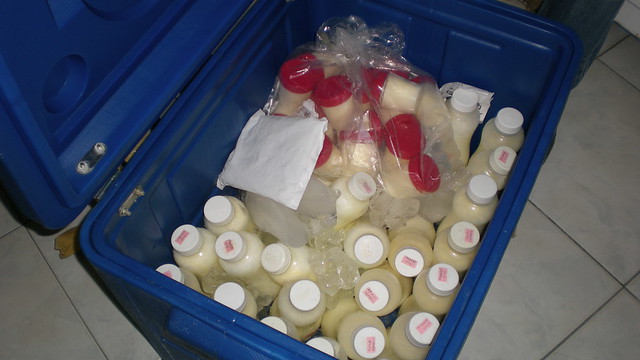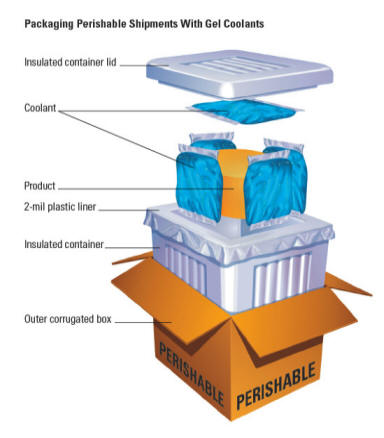| The Medela Freestyle |
BACKGROUND: I am a working mother with a 6 month old. I pump 3-4 times (30 minutes-1 hr sessions) during
the workday and breastfeed 3-5 times a night and all the time on the
weekends. I do not have an over-abundant
milk supply, but when breastfeeding exclusively my supply is fine. I rented a Symphony breast pump for 2 months
after my son was born, then switched to the Freestyle a week before I went back
to work at 2 months postpartum. I
pumped at work using the Freestyle exclusively for 4 months. I purchased the Freestyle from a big-box
retailer after consulting only online reviews.
At the time I purchased the pump, I didn’t know any lactation
consultants or working mothers who pumped, and purely from a research
standpoint, the Freestyle sounded like the workhorse I was looking for. Luckily, between the time I purchased the
Freestyle, and the time I needed to use it, I discovered A Nurturing Moment and
their team of lactation consultants, so when I had problems, I knew where to
start looking for answers.
RECOMMENDATION:
I DO NOT recommend purchasing Medela’s Freestyle Breast Pump.
“It’s like pumping with a jackhammer.”
PROS:
The membranes, connectors, and backplates are easy to clean
(much easier than the Pump-In-Style or
| The Freestyle is intended to simplify pumping. |
CONS:
With each suck, serious vibration that is part of normal
Freestyle pump operation is transferred directly to your breasts. Over time, this caused me recurring breast
tissue irritation, swelling, pain, and damage to my skin. The pump did not fully empty my breasts at
the highest setting I could tolerate (Level 4), which caused me to have issues
with engorgement and severe difficulty pumping out enough milk to feed my
son. The only way I could handle the
vibration somewhat was to slather myself with Lanolin before every pumping
session, but all the symptoms above still occurred. Medela doesn’t make the SoftFit breastshields
that come with this pump in any size besides Medium, does not sell any as spare
parts, and I could not use the PersonalFit breastshields (Medela’s regular
breastshields) with this pump because they made the vibration issue ten times
worse. The pump is also extremely pricey
and twice as loud (at least) as the Pump-In-Style or the Symphony. I would place the Freestyle on the arm of my
chair or on the table and feel the vibration throughout my body. I changed from the Freestyle to the Symphony,
and in the same session where I usually got 5 ounces with the Freestyle, I
collected 7 ounces using the Symphony (time of day, pumping duration, and all other
variables being equal – I ran this comparison the very next day, so the
Symphony hadn’t had time to increase my milk production any).
PURCHASING TIPS –
ITEMS TO CONSIDER: When you
purchase a breast pump, give some thought to the customer service. I didn’t, and now I’m out ~$400 for the pump,
$120 for the connectors, membranes, and backplates, had 4 months of pain and
stress, and almost lost my milk twice.
(I just hope there’s no long term damage.) If you’re a working mother, an inadequate
pump can sabotage your breastfeeding relationship with your child. And the danger can be subtle – it took me a
month to figure out what was going on after I realized there was a problem
somewhere. Yes, prices are higher at A
Nurturing Moment than at the big-box or online retailers, but there is
absolutely no substitute for Glenni’s customer service! If you want Glenni and her team of lactation
consultants to be around to help you with your breast pump and breastfeeding
accessory purchases and concerns and problems in the future, then buy things
from her today. Or support your
local breastfeeding accessory store and lactation consultants if you don’t live
in the Huntsville, AL area. And no,
Glenni didn’t (and won’t) pay me to say that.
It’s just common sense. Consider
the following:
- Will the sales personnel
at the retailer where you plan to purchase your breast pump know anything
about pumping, about combination breastfeeding and pumping, or about the problems
you might encounter?
- Can your retailer show you
how to set up and use your pump?
Yes, I know pumps come with instruction manuals, but I had no idea
if my pump was working right after I put it together – it made strange
noises, and was awkward, and I had no idea if the breastshields were a
good fit. I needed some hands-on
help. You might too.
- Does your retailer have
lactation consultants on staff you can consult with when you have
issues?
- Will your retailer try and
sell you a pump that will meet your personal needs after some discussion
with you, or will they just sell you anything?
- Can you swing by your
retailer for help when something’s not working, and physically show them
what’s wrong? Some problems can
only be demonstrated.
- Can your retailer’s
lactation consultants provide an informed opinion on whether your problems
are caused by your pump, your baby’s suck pattern or latch, your diet, an infection,
etc., and provide educated guidance on how to fix them?
Surely it’s worth the extra few bucks to keep A Nurturing
Moment or your local breastfeeding accessory store and lactation consultants in
business.











